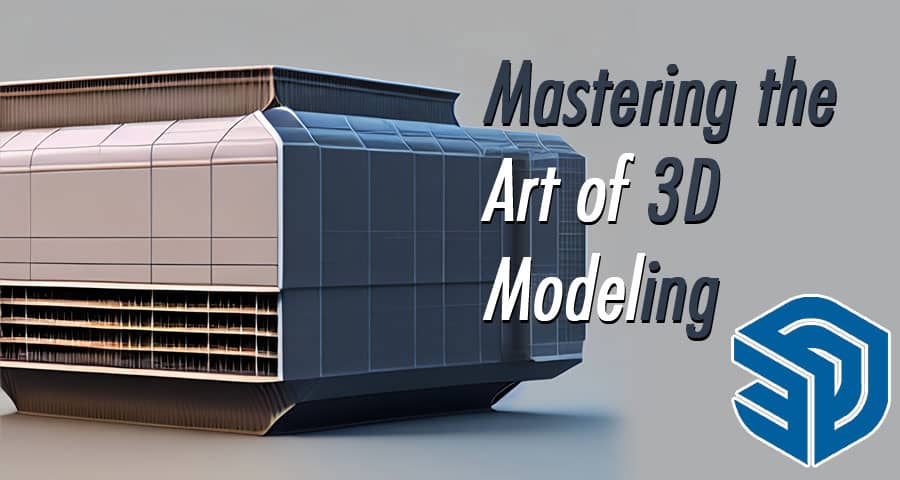In this ever-evolving digital landscape, the world of 3D modeling has emerged as a powerful tool, revolutionizing the way we visualize and create. With its ability to bring imagination to life, 3D modeling has become a fundamental aspect of various industries, ranging from architecture and product design to film production and gaming.
Understanding the Essence of 3D Modeling
At its core, 3D modeling refers to the process of creating a three-dimensional representation of an object or a scene using specialized software. Unlike traditional two-dimensional art forms, such as drawing or painting, 3D modeling allows for the creation of realistic, immersive, and interactive digital environments. By manipulating virtual objects in a virtual space, designers can visualize concepts, test ideas, and simulate real-world scenarios, enabling them to make informed decisions and refine their designs.
Advantages of 3D Modeling: Unlocking Limitless Possibilities
Enhanced Visualization and Communication
One of the key advantages of 3D modeling lies in its ability to enhance visualization and communication. By bringing designs to life in three dimensions, it becomes easier for stakeholders, clients, and collaborators to grasp the intended vision. Whether it’s presenting architectural plans, showcasing product prototypes, or conveying complex ideas, 3D models offer a more immersive and intuitive experience, fostering better understanding and engagement.
Streamlined Design and Iteration Process
3D modeling empowers designers to iterate rapidly and efficiently. With the ability to make modifications in real-time, designers can explore multiple design alternatives and experiment with different concepts without the need for physical prototypes. This streamlines the design process, saves time and resources, and allows for quick adjustments based on feedback, resulting in improved design outcomes.
Realistic Visualization and Simulation
Thanks to advancements in rendering technologies, 3D modeling enables the creation of highly realistic visualizations and simulations. Whether it’s rendering lifelike architectural walkthroughs, simulating fluid dynamics in engineering projects, or creating lifelike characters and environments for games and movies, 3D modeling empowers designers to create immersive experiences that closely resemble the real world.
Efficient Collaboration and Remote Work
In an increasingly interconnected world, 3D modeling facilitates efficient collaboration, even when team members are geographically dispersed. By working on a shared virtual platform, designers and stakeholders can collaborate in real-time, provide feedback, and make revisions simultaneously. This eliminates the need for physical meetings, reduces travel costs, and accelerates the decision-making process, making remote work a seamless and productive experience.
Mastering the Art of 3D Modeling: Techniques and Best Practices
To excel in the realm of 3D modeling, it’s crucial to master various techniques and adhere to best practices. Here are some key considerations to elevate your skills and achieve outstanding results:
Develop a Strong Foundation
Building a solid foundation in the principles of design, composition, and perspective is essential for 3D modeling. Understanding how shapes, light, and shadows interact in the real world will help you create more convincing and visually appealing 3D models.
Master the Tools of the Trade
Familiarize yourself with industry-standard 3D modeling software such as Autodesk Maya, Blender, or 3ds Max. Explore their functionalities, experiment with different tools, and stay updated with the latest software updates and features. The more comfortable you are with the tools, the more efficiently you can bring your ideas to life.
Refine Your Texturing and Lighting Skills
Texturing and lighting play a crucial role in adding realism and depth to your 3D models. Experiment with different materials, textures, and shaders to achieve the desired look and feel. Learn how to manipulate light sources and shadows to create dramatic or natural lighting effects that enhance the overall aesthetics of your models.
Stay Curious and Continuously Learn
The world of 3D modeling is constantly evolving, with new techniques, software updates, and trends emerging regularly. Stay curious, seek inspiration from other artists, and actively participate in online communities and forums to exchange knowledge and learn from industry experts. Continuous learning and experimentation will keep your skills sharp and enable you to stay ahead of the curve.
Unlocking the Power of 3D Modeling: Embrace the Digital Frontier
As we venture further into the digital frontier, the power and potential of 3D modeling continue to expand. From pushing the boundaries of visual effects in movies to creating immersive virtual reality experiences, the applications of 3D modeling are limitless. By mastering the art of 3D modeling and keeping pace with the industry’s advancements, you can unleash your creativity, captivate audiences, and leave a lasting impact in the ever-evolving world of digital design and innovation.
So, gear up, embrace the tools and techniques, and embark on a journey that will transform your ideas into captivating three-dimensional realities. The realm of 3D modeling awaits, ready to turn your imagination into tangible digital masterpieces.


